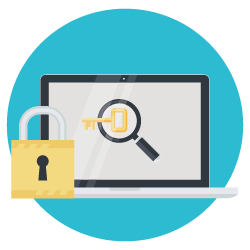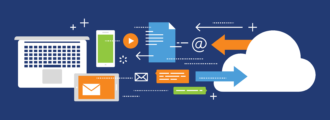In my last article, Cutting Through the Noise: Creating a Cloud Strategy That’s Right for You, I talked about how to determine if a move to the cloud was right for your company and how to begin the transition if you decided that it was. Today I want to talk about the case for sticking with an on-premise strategy.
I have the pleasure of speaking with leaders in companies that run JD Edwards on a daily basis. I attend Collaborate, InFocus, and OpenWorld conferences, and those opportunities give me a good read on the heartbeat of the greater JD Edwards community. R
JD Edwards customers have invested millions of dollars into their ERP strategies and have great reasons for wanting to keep their on-premise installation of JD Edwards. So, let’s take a look at some of those reasons.
Costs of an On-Prem ERP vs. ERP in the Cloud
On-prem solutions require an upfront investment, largely due to investments in new hardware, and the labor associated with customization and implementation costs, which can be considerable. However, once the system is implemented, costs are usually limited to maintenance for the lifetime of the equipment.
Source: ERP in the Cloud report via pwc and Strategy&
Cost savings is a common argument made in favor of the cloud, but while cloud is cheaper to implement than an on-prem system, total cost of ownership tends to even out when considered cumulatively (PwC and Strategy& show costs tipping in favor of on-prem before year 5 in their ERP in the Cloud report). Companies who have already invested in on-prem equipment aren’t actually likely to realize a cost-savings by moving to the cloud until it becomes time to replace their existing equipment.
On the flip side, companies who are faced with large hardware purchasing expenses might want to take a look at a cloud solution. There are three specific scenarios where I think cloud might be a cost-effective solution:
- Net new installations of EnterpriseOne
- World customers converting to EnterpriseOne (and looking to move off their I-Series)
- Existing EnterpriseOne customers at the end of their hardware lifecycle
Otherwise, cloud is unlikely to offer significant annual cost-savings for those with existing on-prem installations—and cloud may even cost significantly MORE over the next 10 years for those companies that switch prematurely.
Security Considerations for On-prem vs. Cloud ERP systems

Trust isn’t the only factor that should weigh into your decision, however. It’s worth asking yourself how secure your on-prem system is now. For some companies, a move to cloud actually means an increase in security. Cloud companies understand that their clients need to trust them and generally work hard to ensure high levels of security; as a result, some cloud providers may have more security measures in place that your company does. But a large public cloud will also be a much larger target for cyber criminals. And, as we all know, cybersecurity is a game of defense, and all it takes is one successful hack to compromise and expose your precious data.
With an on-prem solution, you are the master of your own destiny when it comes to data security—for better or worse.
Customization of ERP Systems
The third factor worth giving some serious thought when weighing an existing on-prem ERP system against one that lives on the cloud is customization.

Software flexibility is deeply embedded in the DNA of the JD Edwards install base. There’s a great freedom that exists in being able to create a business process that best suits your organization and adopting a software product that can follow along.
In many cases, the flexibility of JD Edwards is one of the core reasons customers originally chose it over SAP, EBS, and other suitors. In my conversations over the years with JDE customers across the country, it has become apparent that this flexibility is a key reason many customers have fallen in love with software and have remained so incredibly loyal to it.
By comparison, cloud applications are generally much harder to customize, and offer significantly less flexibility.
New is Not Always Better
When evaluating your existing on-prem system against a potential move to the cloud it’s important to remember “new” isn’t always the same as “better.” I learned this the hard way recently in my personal life. My wife and I decided to replace our traditional washer and dryer with new, energy-efficient machines. The units we purchased are state-of-the-art with all the latest bells and whistles, but my wife hates them. Despite being more energy efficient, the new machines simply don’t clean and dry clothes as well as our old system did, and at their core, that’s what we needed them to do.
My point is this: Don’t go to the cloud just because that’s what everybody else is selling. Think long and hard about what benefits your organization will receive by transitioning to the cloud and, ultimately, make sure you’re doing what is best for you.
Even if that means sticking with an on-prem system for now.
This is the fourth piece in a 6-part series on JD Edwards in the cloud. Read the rest:




